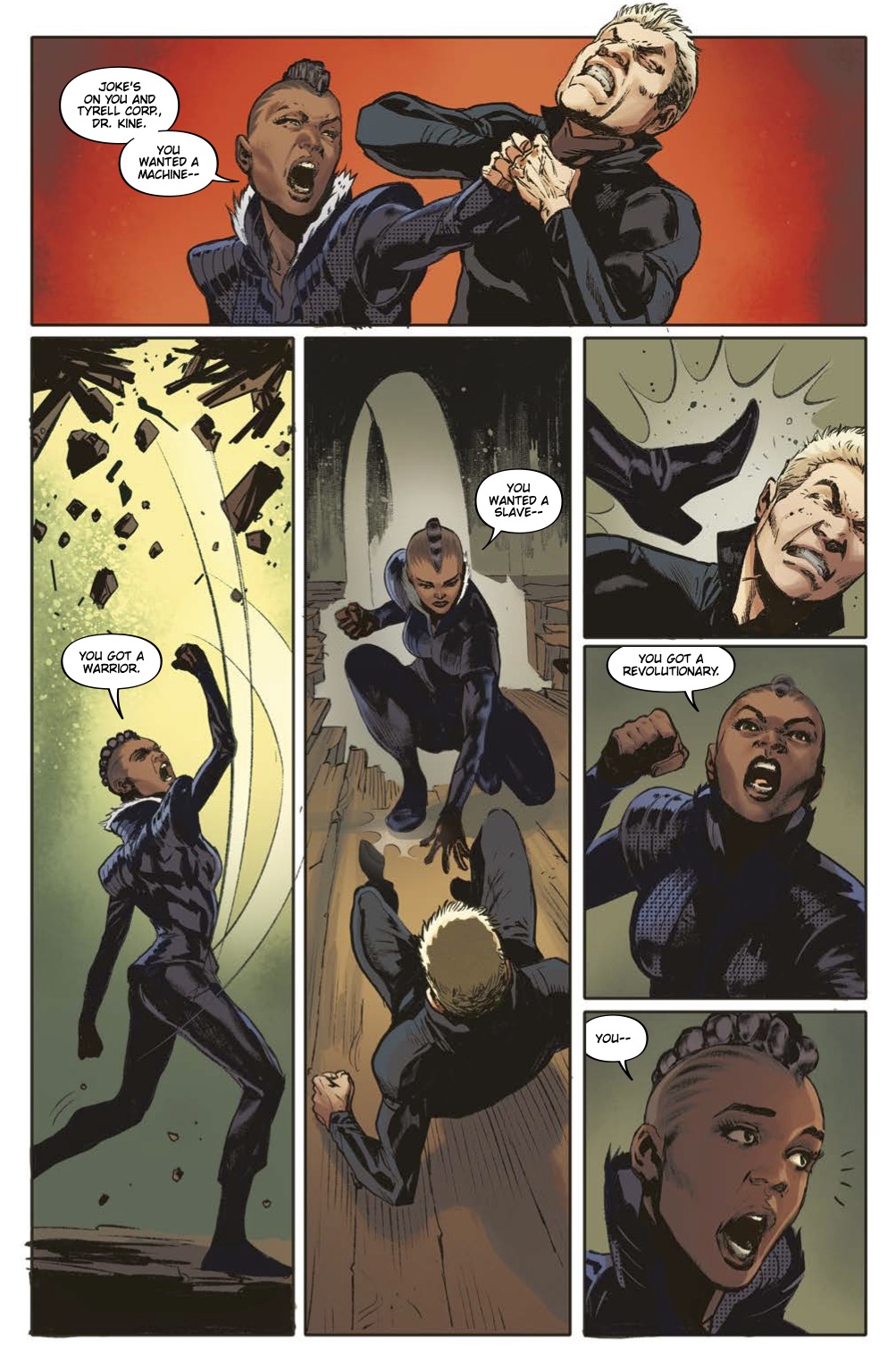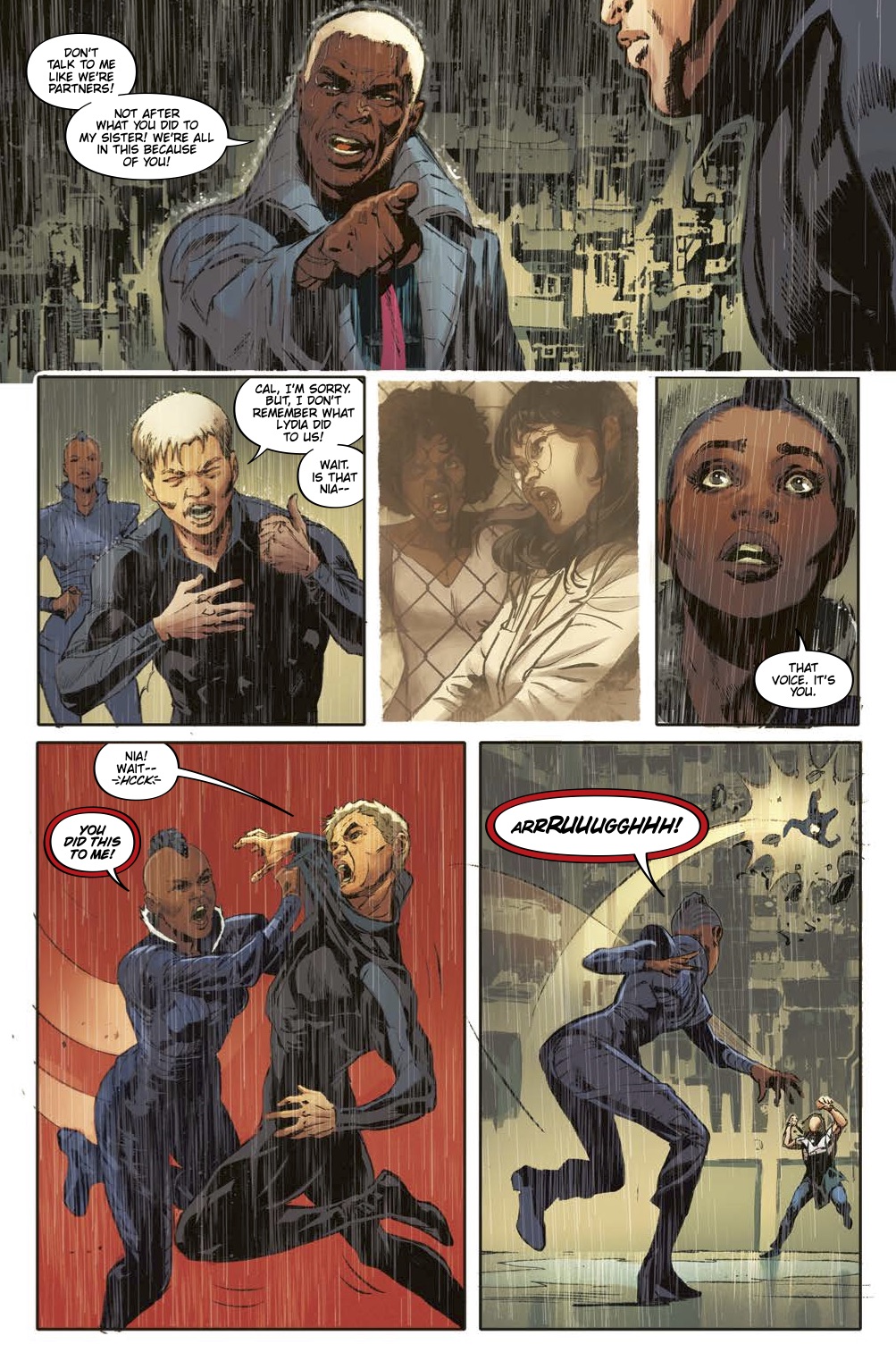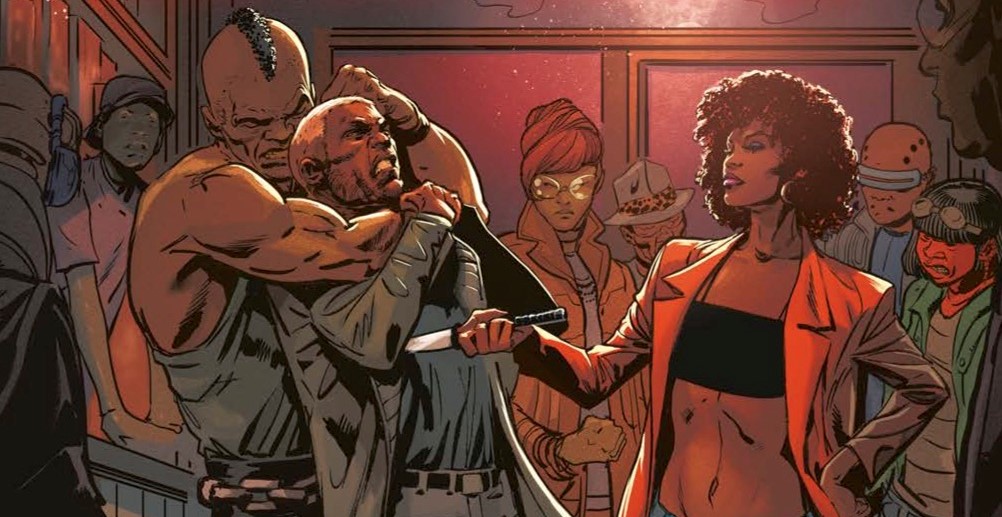Table of Contents Show
Blade Runner: Origins #8 sees the emotional confrontation between multiple parties as they come to terms with their past and the present. It’s one hell of an emotional rollercoaster, going from tragedy to action in quick succession and switch between. But can the bombastic fight add additional weight to the emotional turmoil of our characters?
Blade Runner: Origins #8: Emotional Confrontation
Blade Runner: Origins #8 has Nia confront Asa and Cal confront Nia. It’s a multipronged and very twisted family reunion, and naturally, it is quite messy. Asa, who used to be known as Lydia, had transferred the consciousness of Nia into a Replicant as a test. This test was done without Nia’s consent, and it adds only more fuel to the fire that it was a selfish decision when we know full well that Lydia did the same to herself and became Asa. This is a very ugly moral problem these characters have stumbled into. On the one hand, you have a woman that didn’t ask for this but has found a new purpose through this tragedy. And on the other hand, you have someone that didn’t feel comfortable in their body, so attempted to create a new one, but at the cost of others.

Asa and Lydia are no longer the same, Lydia is dead, and Asa has risen from the ashes. But that doesn’t erase what Lydia did. Whether he wants to or not, Asa must acknowledge his complicity in what happened to Nia. Asa says he wants to make things right and redeem himself. The problem is that the transfer of Lydia to become Asa didn’t go as smoothly as planned, and Asa doesn’t remember everything that happened when he was Lydia. Nia, understandably, sees this as a scapegoat, a convenient truth to hide behind. And yet all evidence points to Asa wanting to make amends, and yet after everything Lydia did, can he? K. Perkins and Mellow Brown, well done for putting a complicated subject in here and actually letting the characters struggle with the ethical implications. Beautifully thought-out stuff.
Meanwhile, Cal has to confront the homicidal Replicant he has been on the hunt for in previous issues. At the same time, his kind of partner is being battered to death by his sister who is now a Replicant, and vice versa. When everything simmers down, there is a touching scene where Cal and Nia finally get to talk as brother and sister. They have both changed, they have both been used, and they both ended up on different sides of an ongoing and very heated debate. Where do they go from here? The answer, of course, doesn’t matter. Blood binds us in ways we often can’t understand, even if one of them doesn’t have traditional human blood.
Fun Yet Problematic Fight
The big fight between Nia and Asa and the smaller scale fight with Cal is beautifully drawn by Fernando Dagino. The fight is kinetic, we, the reader, feel every blow, and by the time it is over, we too are exhausted along with the characters. There is even a brilliant series of panels where the Replicant has the upper hand on Cal and barrels him through a wall. Instead of showing it in full, Dagino brilliantly decides to convey the ferocity of the action rather than the action itself. We see the Replicant’s legs moving quickly with each passing panel, all done in silhouette until the panels reach the wall. Then a separate panel sees the wall explode, implying that Cal really had no chance, and we the reader get to feel that with him.

However beautiful this fight is, and how emotionally cathartic it is as previously mentioned, this comes with some caveats. In the original Blade Runner film, we see Roy Batty smash his way through a wall and make a leap that Deckard couldn’t. To be precise, he was a Replicant, a combat model, so it makes sense he has enhanced abilities. But this fight was taking place in a rundown apartment complex; the area was not well maintained and so most likely decaying and brittle. In Blade Runner 2049, we see K burst through a couple of walls throughout the film, and the strength he displays is shown to be scary by everyone else that witnessed it. So, in Blade Runner: Origins #8, we see Nia throw Asa several yards into a building. We also see several instances of them bursting through walls; at one point, Cal is carried through several by a Replicant. But then Asa defeats said Replicant by dropping from a great height and bursting him through at least seven floors of an apartment building.
As seen in the examples from the movies, as well as some instances from the original novel, the Replicants are stronger and faster, but not to Superman levels. I’m not sure if this bombast was in the script or if it was an embellishment from Dagino, but it feels distinctly out of place in Blade Runner: Origins #8. Tone down the super feats; they are robots made with organic material, not Kryptonian.
Blade Runner: Origins #8 Is Both An Emotional And Physical Gut Punch
Blade Runner: Origins #8 pays off several emotional threads as our characters battle physically and mentally. It may get carried away with the theatrics of the battle, but that is easily excusable for the great character work.
![]()
